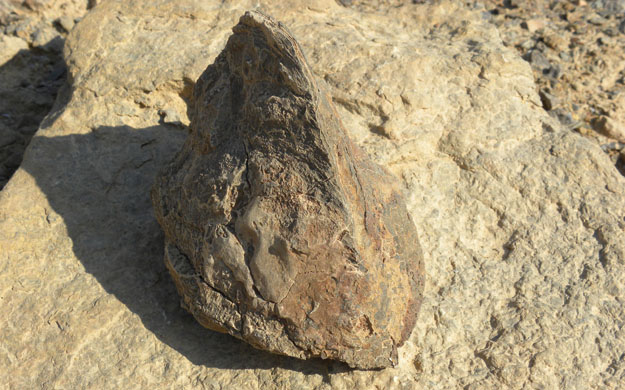The latest issue of the journal Palaeontology has an article describing a new family of large clams from the Triassic of southern Israel. The authors include Allison Mione (’05), who pursued this project as part of her geology Independent Study.

A specimen of the new clam family Ramonalinidae from the Triassic of southern Israel in Makhtesh Ramon.
The Ramonalinids: a new family of mound-building bivalves of the Early Middle Triassic
by Thomas E. Yancey, Mark A. Wilson and Allison C.S. Mione
Abstract: Ramonalina n. gen. is a large thick-shelled bivalve abundant in mounds preserved in the Gevanim Formation (late Anisian, Middle Triassic) of southern Israel. This bivalve was an edgewise-recliner with a flattened anteroventral (functionally basal) surface and partially fused valves. It is the basis of a new family, the Ramonalinidae, which is descended from the myalinids through adaptation to edgewise positioning. Ligamental attachment was inadequate to hold valves together on large adults, resulting in valve displacement followed by shell secretion in the apical area that fused valves together and caused irregular growth on abapical areas. The ramonalinids formed large, nearly monospecific mounds on firm mud substrates in shallow marine waters. These are the largest Middle Triassic bivalve mounds known.
(For a well-written account of this story, please see the February 27, 2010, article by John Mangels in the Cleveland Plain Dealer.)



Interesting find….are they really the largest Middle Triassic bivalve known? I plan on reading John Mangels article as this story is very interesting.